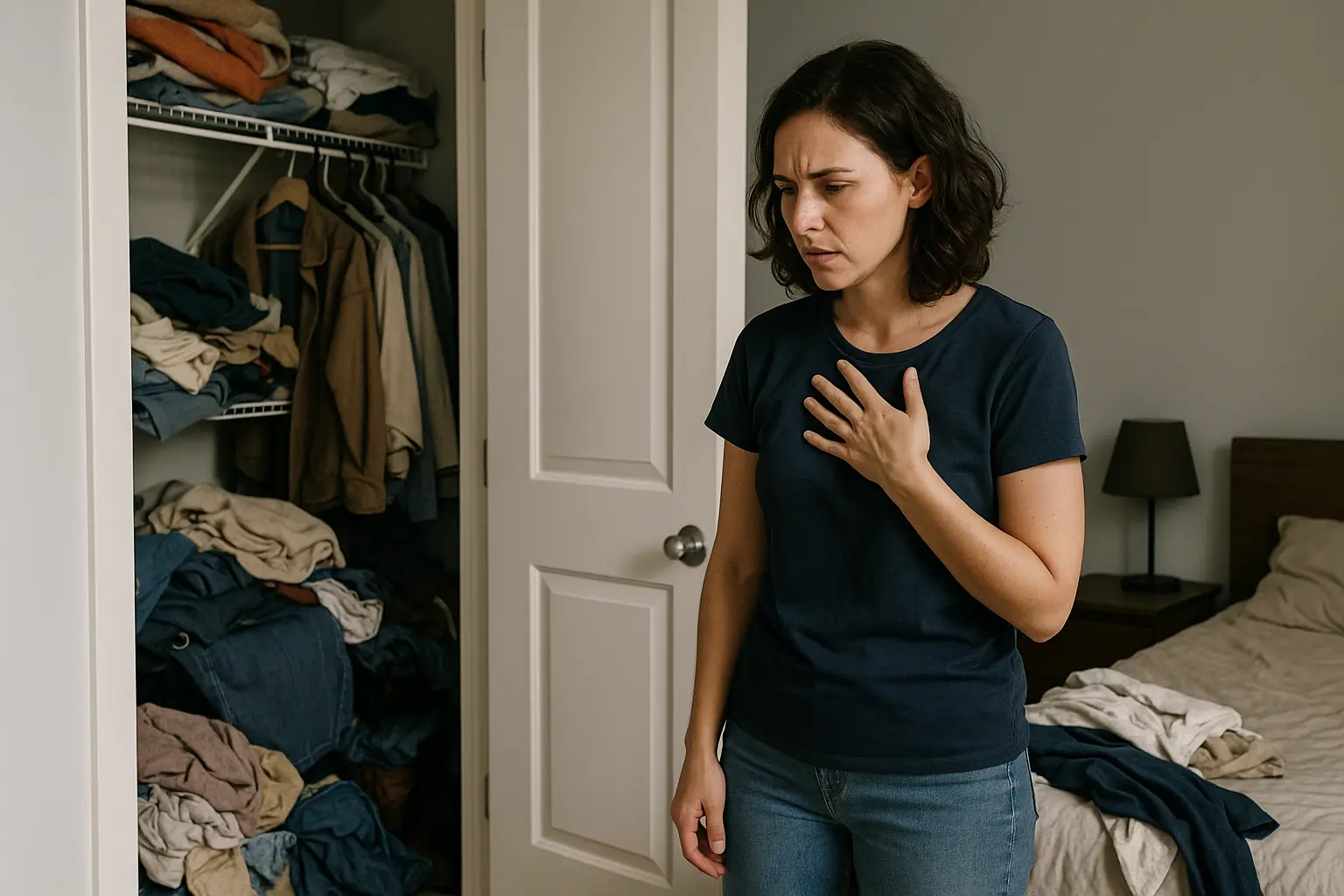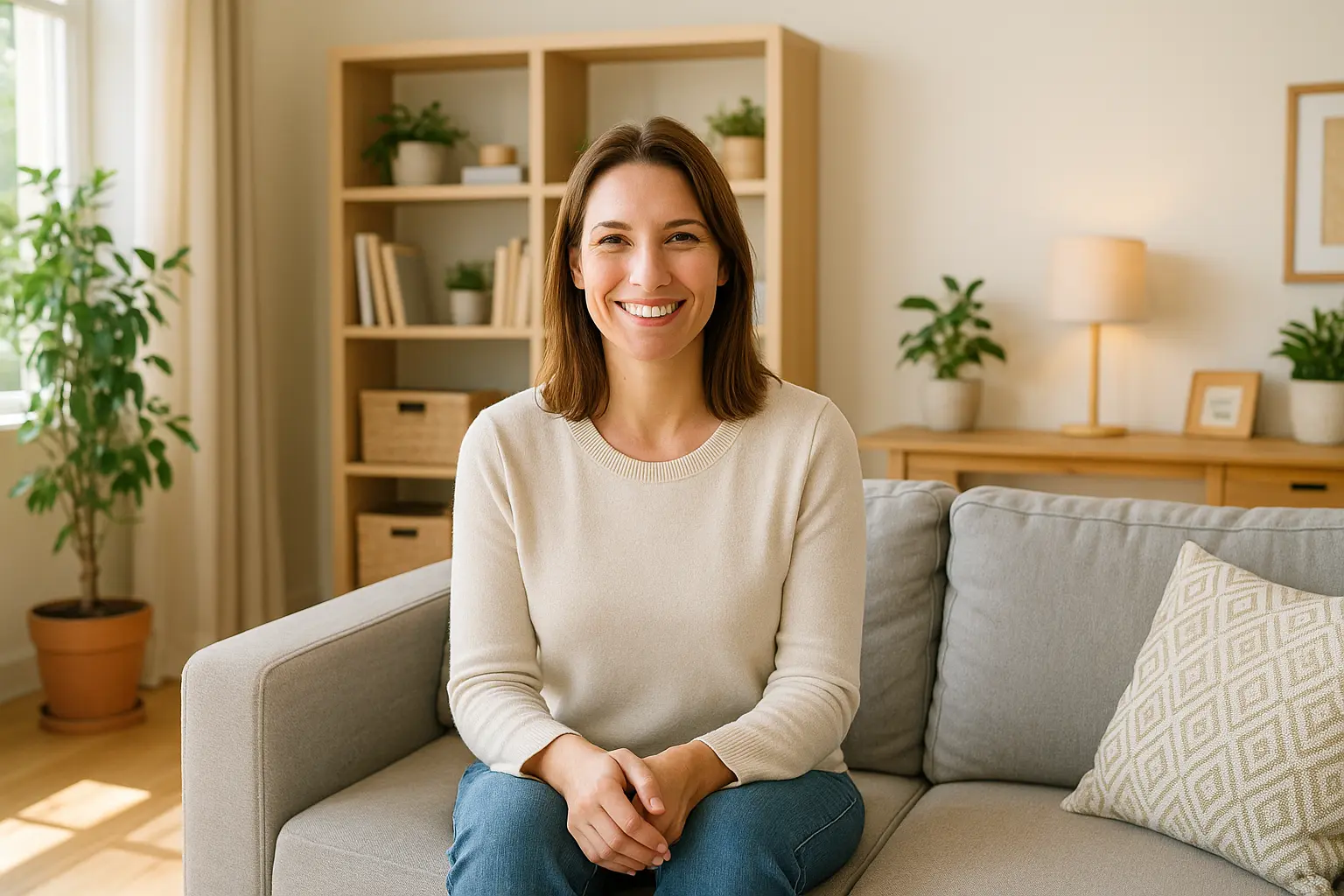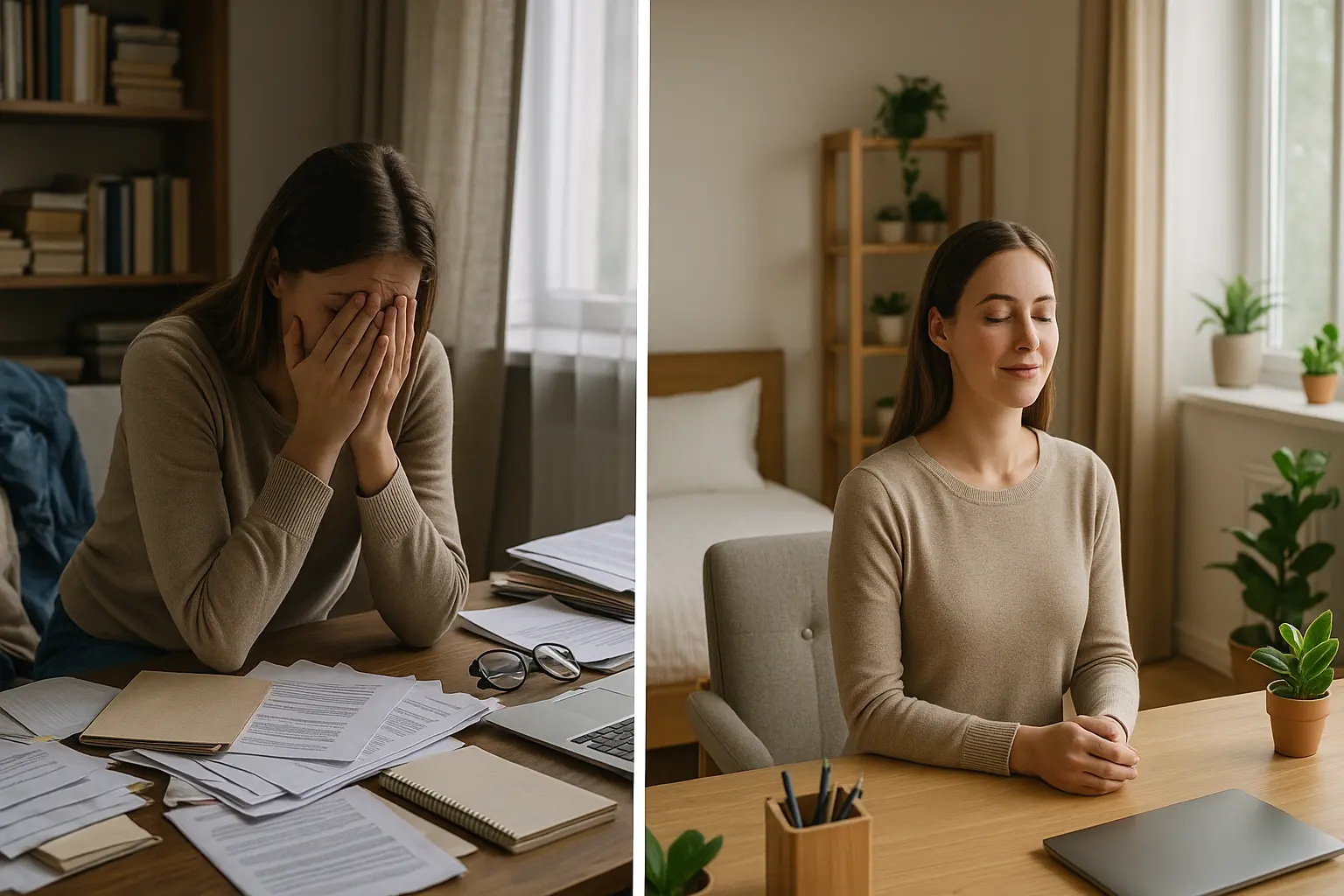Why Mess Feels Overwhelming & How to Get Your Space Back Of ADHD Clutter Anxiety
If you live in Encino or around the San Fernando Valley and feel like the piles at home or on your desk are constantly “shouting” at you, you’re not alone. Many people describe a specific kind of ADHD Clutter Anxiety tied to visual mess: mail you meant to sort weeks ago, laundry that seems to multiply, a desk that collects half-finished projects. It’s not laziness. It’s the way ADHD affects attention, working memory, and executive function—skills that steer planning, starting, prioritizing, and finishing. This long-form guide is clinician-written for our Encino community.
We’ll explain why ADHD and clutter so often travel together, how clutter inflames anxiety (and vice versa), and what you can do step by step to build a calmer, more functional space that fits your brain. We’ll also share when to consider an ADHD evaluation and treatment, how medication management and psychotherapy and counseling support real-world progress, and what care looks like at our Encino psychiatry clinic.
Why ADHD and Clutter Collide
ADHD is a neurodevelopmental condition that affects the “project manager” parts of the brain—what clinicians call executive functions. When planning, prioritizing, sequencing, and self-monitoring take extra effort, everyday life produces more “open loops”: half-sorted papers, a donation bag with no next step, a box left out so you won’t forget what’s inside.
Working memory is a major player. When it’s hard to hold multiple steps in mind, even small decisions stall: Where does this go? Is this important? Do I have time? The brain quietly chooses the fastest path to relief—avoidance. Multiply those micro-avoidances across a day, and little piles turn into visual chaos by week’s end.
You may hear people say ADHD causes “object permanence” problems—that if something’s in a drawer, it basically doesn’t exist. A more accurate way to say it is: ADHD-related working-memory lapses can feel like that in daily life. The fix isn’t to shame yourself into remembering; it’s to make remembering easier and automatic.
The Anxiety Feedback Loop

Clutter doesn’t just reflect ADHD; it feeds anxiety. Visually busy rooms keep your nervous system on alert. Many adults describe a body-level response—tight chest, racing thoughts—the moment they look at a messy closet. Anxiety then narrows attention and drives avoidance: your brain “protects” you by not opening the closet at all. Short-term relief, long-term pile-up.
ADHD often involves differences in time perception. Five minutes of tidying feels like fifty. Or an hour disappears while you hyperfocus on something else. That makes routine upkeep tough to start and harder to sustain. You don’t lack motivation; you lack a reliable internal clock for boring maintenance tasks. External time cues and “done-by” limits (you’ll see how below) are medicine for this problem.
How to Dedicate to ADHD Clutter Anxiety or Something Else?
Most of what people call “clutter anxiety” in ADHD boils down to overwhelm + avoidance:
You can organize once, but maintenance collapses without support (timers, checklists, accountability).
You stash items “to deal with later,” then forget them until the pile triggers shame.
You swing between hyper-cleaning bursts and long freeze periods.
You rely on visual cues (“If I put it away, I’ll forget”), but too many cues become visual overload.
Decisions feel exhausting (“Where does this go?” “Does this matter?”), leading to paralysis.
When clutter causes safety hazards, you’re unable to discard almost anything, or distress spikes if someone moves your belongings, that can signal hoarding disorder—a separate diagnosis that can co-occur with ADHD and anxiety and requires specialized therapy. If you’re unsure, a structured ADHD evaluation and treatment visit is a solid first step to sort the picture.
The Three-Lever Plan From APA Clinics Environment - Behavior - Biology

ADHD clutter anxiety isn’t solved by “trying harder.” It’s solved by systems that make the right thing the easy thing, supported by skills and (when appropriate) medical treatment. We stack three levers:
Environment: Design spaces that reduce friction and increase visibility.
Behavior & skills: Train routines that are short, repeatable, and forgiving.
Biology: Treat ADHD (and anxiety/depression if present) so starting and finishing become easier.
1) Environment — Make the Room Do The Work
You shouldn’t have to “try harder” every hour of every day. Instead, design the room to reduce friction and boost visibility.
Create micro-zones: Break a room into postage-stamp areas you can reset in 10–20 minutes: a mail landing strip, a keys + wallet bowl, a work-in-progress tray, a donation bag. Give each zone one clear function. Your brain should never renegotiate where something goes.
Favor see-through storage: If you need visual reminders, choose clear bins or open shelves with bold labels. Use opaque containers only for low-priority storage so your everyday field of view stays calmer.
Build an intake lane: All new stuff—mail, packages, school forms—lands in one tray you empty on a schedule. No more orbiting piles.
Install reset rituals: Two predictable moments a day keep entropy at bay: a morning reset (five minutes) and an evening reset (ten minutes). Maintenance works best little and often.
Right-size the distance: Your tools must live within two steps of where you use them. If the shredder is down the hall, papers won’t get shredded. If the hamper is across the apartment, clothes will camp on chairs.
Make clutter harder to create: Park a donation bag by the closet, a trash can near the mail station, and recycle by your desk. When the “good” choice is the easy choice, you win on autopilot.
Guard your attention: If your desk faces the kitchen, dishes will steal focus. Even a simple room divider in a shared Encino apartment can quiet visual noise.
2) Behavior & Skills — Train
Schedule the maintenance, not just the projects: Put recurring calendar blocks for 10–20-minute resets and a weekly bill-pay session. Use external time cues (analog clock, timer, visible countdown). The goal is to solve time blindness, not shame it.
Use body doubling (low-pressure): Work simultaneously with a friend (in person or on FaceTime) or try a quiet virtual co-working session. Quick check-ins (“done / next”) boost initiation and reduce drift. Not magic, but often surprisingly effective.
Switch to “startable” tasks: Rename “Organize office” to “Sort top-left stack for 10 minutes” or “File receipts from this month”. You’re reducing decision load and creating quick wins.
Try rhythm-based sprints: 25 minutes on / 5 off, or 15/5 if you’re at the edge of avoidance. Then stop, reset the timer, and repeat only if you want. End on purpose; closure matters to the ADHD brain.
Automate repetition: Auto-pay predictable bills. Set reminders for trash day, laundry, and paperwork. Subscribe-and-save items you always forget. Offload remembering to systems.
Tune dopamine: Mild stimulation often helps the ADHD brain: instrumental music, a small desk fan, or shifting to a low-distraction spot on Ventura Blvd for an hour. If sound distracts you, flip it—noise-canceling headphones and a minimal setup.
Practice compassionate self-talk: Shame drains energy. Replace “I’m bad at this” with “I’m building a system that works for my brain.”
3) Biology — Treat the Underlying ADHD and anxiety
For many adults, the biggest breakthroughs happen when behavioral changes ride alongside medical treatment:
Medication management can support attention, task initiation, and follow-through. Stimulants and non-stimulants don’t organize your room, but they make it easier to start and finish the small steps that keep a space orderly. Choices are individualized after a medical evaluation.
Psychotherapy and counseling—especially CBT and skills-based therapy—targets avoidance, perfectionism, and task breakdowns. If anxiety is the gasoline on the clutter fire, focused anxiety treatment reduces the body-level “freeze” that keeps piles intact.
Coaching / OT-style support helps translate insight into real-world systems—labeling, layout, rhythms—so your space quietly supports you.
Families and Roommates: Keep it Kind and Visible
If you share space in Encino:
Label everything with words + icons to support working memory.
Use drop zones by the door for things that go back out tomorrow.
Pick a shared 10-minute reset after dinner with a familiar playlist.
Reduce inventory where fights keep happening—fewer toys on open shelves, fewer mugs on the counter, fewer choices in the entryway.
Set neutral scripts: “Where’s this item’s landing zone?” beats “Why are you so messy?”
If conflict dominates clean-up time, or a teen’s room is so crowded that safety is a concern, get support. We can help you distinguish typical mess, ADHD-related executive-function challenges, and signs of hoarding disorder that need specialized care.
Frequently Asked Questions
Is clutter anxiety part of ADHD or anxiety?
Often both. ADHD contributes via executive-function and working-memory challenges that make starting, sequencing, and finishing harder. Anxiety rises in visually chaotic spaces and fuels avoidance. Treating both usually yields the best results. For education on adult ADHD, see reputable overviews like the NIMH ADHD page and the CDC’s ADHD in adults resources.
Do ADHD medications help with clutter anxiety?
Meds don’t organize for you, but they can improve focus and initiation, which makes maintenance more doable. Treatment is individualized. If you’re curious, schedule a consultation to discuss medication management alongside skills and environmental tweaks.
Is “body doubling” legit?
Plenty of people with ADHD swear by it, and many clinicians recommend it as a low-risk way to boost initiation. Research is catching up, so treat it as a practical experiment. If it helps you start and stay, it’s doing its job.
How is hoarding different from ADHD clutter anxiety?
Hoarding is a separate diagnosis marked by persistent difficulty discarding items and clutter that compromises living areas. ADHD can co-occur and make organization harder, but hoarding treatment involves specialized therapy and safety planning. If you’re unsure, book an ADHD evaluation and treatment visit to clarify.
Why do I lose track of time when I try to tidy?
ADHD frequently involves time-perception differences. Short, structured sprints with visible timers, plus clear stopping points, help a lot. You’re solving a brain-based challenge with a brain-friendly tool.
Related Blogs About ADHD Clutter Anxiety From Advanced Psychiatry Associates
If you want step-by-step strategies beyond this Encino-specific guide, these APA posts go deeper:
The ADHD Mind and Its Battles with Clutter : a deeper look at why clutter hits harder with ADHD
Comprehensive ADHD-Friendly Environment : design principles for calmer spaces
5 Strategies for Managing ADHD Clutter : quick wins you can try tonight
Overwhelmed by Clutter – The ADHD Dilemma : what to do when the emotions spike
Strategies for Adults Living With ADHD : habits and routines that actually stick
How Advanced Psychiatry Associates Team in Encino Can Help

If clutter anxiety is eating your evenings and weekends, you don’t need a personality transplant; you need systems that fit your brain, plus the right treatment plan.
At Advanced Psychiatry Associates in Encino, CA, we offer:
Comprehensive ADHD evaluation and treatment for adults (and age-appropriate assessments for teens), including screening for anxiety, depression, and OCD-spectrum conditions.
Medication management tailored to your goals and routines.
Psychotherapy and counseling (CBT and skills-based work) that targets avoidance, perfectionism, and decision fatigue; focused anxiety treatment when needed.
Coaching-style support to test systems, labels, and layouts in real life.
Telehealth across California if getting to an appointment is one more hurdle on your list.
Ready to feel at home in your space again? The easiest next step is to schedule an appointment or contact our Encino psychiatry clinic for a confidential ADHD consult (in person or via telehealth). We’ll help you build a plan that addresses environment, behavior, and biology—so the calm you create is calm you can keep.






